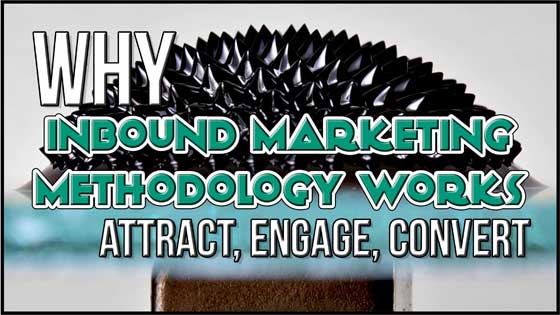Marketing is essential for ongoing growth of your company, and most business owners are constantly looking for new ways to generate and convert leads. To be effective, however, any marketing team needs to fully understand, document and target your buyer personas.
Inbound marketing, which finds its roots in permission marketing (a term coined by Seth Godin), manages to attract, engage and convert prospects primarily as a result of its methodology.
Table of Contents
ToggleHow the Inbound Methodology Works
Inbound marketing generates demand for your product or service in your target market by:
- Creating awareness of your offering
- Attracting prospective clients to your company
- Engaging with them early in their search
- Nurturing prospects through the key points in the sales funnel until they are ready to purchase
- “Closing loops” in the process by using marketing automation methods to move prospects through key steps in the journey, depending on what stage they are in when they connect with your company
- Converting visitors to leads, leads to sales and sales to happy customers
- Establishing your business as an authoritative supplier in your industry
- Delivering quality service that delights clients, builds loyalty and generates future sales.
This works for a number of reasons, namely that it:
Matches the Way People Buy
Customers increasingly find “interruption marketing” objectionable. Prospective buyers are tired of being sold to, and no longer want advertising or promotions to intrude continually on their subconscious.
Clients want to research solutions to their needs independently and initiate contact themselves, based on the value of your offering, the information available and online reviews about its effectiveness.
The consumer wants to come looking for you, not the other way around, and inbound marketing provides ways to attract him (or her) that let him believe he has done the work.
Uses Technology to the Fullest
As the Western world has become technologically advanced, business has shifted away from traditional methods of marketing. Inbound marketing uses online media to generate interest, which delivers the message that your company is up-to-date and capable of performing in the digital environment.
Targets Customer Needs
In the past, traditional marketing methods were based on features instead of benefits. To engage prospective customers, marketers had to learn new ways of presenting benefits of a product so it provides a solution to the client’s problem.
This makes it necessary to research the audience and create solid customer personas to develop content that hits the mark. Instead of being aimed at a general audience, a large chunk of which will tune it out, marketing is tailored specifically for the needs of the ideal customer.
Focuses on Leads, Not Branding
Building brand awareness has been marketing’s primary purpose for years, while leads were a problem for sales departments. This led to the well-known divide between sales and marketing that caused friction in many organizations.
With inbound marketing, the point is to engage prospects and convert them into leads. This is the only marketing methodology that offers tools for generating leads, instead of promoting the product or company.
Has Automation Capabilities
Few traditional marketing methods had any automation options. Either your marketer was doing the work, or you were paying someone else to do it. With inbound marketing, it’s possible to automate processes such as:
- Email nurturing
- Client relationship management
- Statistical reporting
This results in lower costs and less demand on your time, and provides more accurate results.
B2B Marketing Based on Real Results
Speaking of results, when last did traditional marketing give you precise feedback on the number of prospects who viewed your ad, who read it and how long they spent on your site? And when last did you get those results within 24 hours?
With inbound marketing, you get insights into your campaigns’ performance – not at the end of the campaign, but every day. You can literally glance at your smartphone and see stats of the number of visitors, where they came from, how many signed up, read your content and more.
And the kicker? You can modify anything that isn’t working, right there and then. There’s no dumping of printed material, scrapping of expensive video footage or paying for ad space you can no longer make use of.
Delivers Measurable Revenue & ROI
The availability of real-time, statistical results means you can measure your returns accurately. Opportunities like including unique identifiers, IP addresses and social media handles means you can connect the dots between who visits your site and who buys your product or schedules a consultation. Once you apply monetary values to those actions and compare them with the costs of inbound marketing, you’ll get a clear view of your ROI.
The inbound marketing methodology works because it focuses on attracting prospects to your site, engaging them with your material and converting them by giving them value in exchange for their time.











